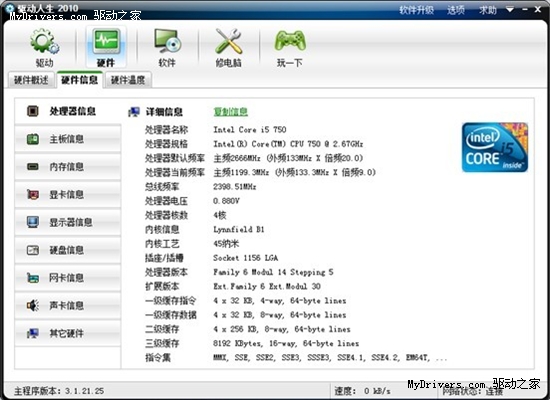本文实例总结了PHP中Header使用的HTTP协议及常用方法。分享给大家供大家参考。具体方法如下:
function https($num) {
$http = array (
100 => "HTTP/1.1 100 Continue",
101 => "HTTP/1.1 101 Switching Protocols",
200 => "HTTP/1.1 200 OK",
201 => "HTTP/1.1 201 Created",
202 => "HTTP/1.1 202 Accepted",
203 => "HTTP/1.1 203 Non-Authoritative Information",
204 => "HTTP/1.1 204 No Content",
205 => "HTTP/1.1 205 Reset Content",
206 => "HTTP/1.1 206 Partial Content",
300 => "HTTP/1.1 300 Multiple Choices",
301 => "HTTP/1.1 301 Moved Permanently",
302 => "HTTP/1.1 302 Found",
303 => "HTTP/1.1 303 See Other",
304 => "HTTP/1.1 304 Not Modified",
305 => "HTTP/1.1 305 Use Proxy",
307 => "HTTP/1.1 307 Temporary Redirect",
400 => "HTTP/1.1 400 Bad Request",
401 => "HTTP/1.1 401 Unauthorized",
402 => "HTTP/1.1 402 Payment Required",
403 => "HTTP/1.1 403 Forbidden",
404 => "HTTP/1.1 404 Not Found",
405 => "HTTP/1.1 405 Method Not Allowed",
406 => "HTTP/1.1 406 Not Acceptable",
407 => "HTTP/1.1 407 Proxy Authentication Required",
408 => "HTTP/1.1 408 Request Time-out",
409 => "HTTP/1.1 409 Conflict",
410 => "HTTP/1.1 410 Gone",
411 => "HTTP/1.1 411 Length Required",
412 => "HTTP/1.1 412 Precondition Failed",
413 => "HTTP/1.1 413 Request Entity Too Large",
414 => "HTTP/1.1 414 Request-URI Too Large",
415 => "HTTP/1.1 415 Unsupported Media Type",
416 => "HTTP/1.1 416 Requested range not satisfiable",
417 => "HTTP/1.1 417 Expectation Failed",
500 => "HTTP/1.1 500 Internal Server Error",
501 => "HTTP/1.1 501 Not Implemented",
502 => "HTTP/1.1 502 Bad Gateway",
503 => "HTTP/1.1 503 Service Unavailable",
504 => "HTTP/1.1 504 Gateway Time-out"
);
header($http[$num]);
};
//200 正常状态
header('HTTP/1.1 200 OK');
// 301 永久重定向,记得在后面要加重定向地址 Location:$url
header('HTTP/1.1 301 Moved Permanently');
// 重定向,其实就是302 暂时重定向
header('Location: http://www.xxxx.com/');
// 设置页面304 没有修改
header('HTTP/1.1 304 Not Modified');
// 显示登录框,
header('HTTP/1.1 401 Unauthorized');
header('WWW-Authenticate: Basic realm="登录信息"');
echo '显示的信息!';
// 403 禁止访问
header('HTTP/1.1 403 Forbidden');
// 404 错误
header('HTTP/1.1 404 Not Found');
// 500 服务器错误
header('HTTP/1.1 500 Internal Server Error');
// 3秒后重定向指定地址(也就是刷新到新页面与 <meta http-equiv="refresh" content="10;http://www.xxxx.com/ /> 相同)
header('Refresh: 3; url=http://www.xxxx.com/');
echo '10后跳转到http://www.xxxx.com';
// 重写 X-Powered-By 值
header('X-Powered-By: PHP/5.3.0');
header('X-Powered-By: Brain/0.6b');
//设置上下文语言
header('Content-language: en');
// 设置页面最后修改时间(多用于防缓存)
$time = time() - 60; //建议使用filetime函数来设置页面缓存时间
header('Last-Modified: '.gmdate('D, d M Y H:i:s', $time).' GMT');
// 设置内容长度
header('Content-Length: 39344');
// 设置头文件类型,可以用于流文件或者文件下载
header('Content-Type: application/octet-stream');
header('Content-Disposition: attachment; filename="example.zip"');
header('Content-Transfer-Encoding: binary');
readfile('example.zip');//读取文件到客户端
//禁用页面缓存
header('Cache-Control: no-cache, no-store, max-age=0, must-revalidate');
header('Expires: Mon, 26 Jul 1997 05:00:00 GMT');
header('Pragma: no-cache');
//设置页面头信息
header('Content-Type: text/html; charset=iso-8859-1');
header('Content-Type: text/html; charset=utf-8');
header('Content-Type: text/plain');
header('Content-Type: image/jpeg');
header('Content-Type: application/zip');
header('Content-Type: application/pdf');
header('Content-Type: audio/mpeg');
header('Content-Type: application/x-shockwave-flash');
//.... 至于Content-Type 的值 可以去查查 w3c 的文档库,那里很丰富
?>
希望本文所述对大家的PHP程序设计有所帮助。

















